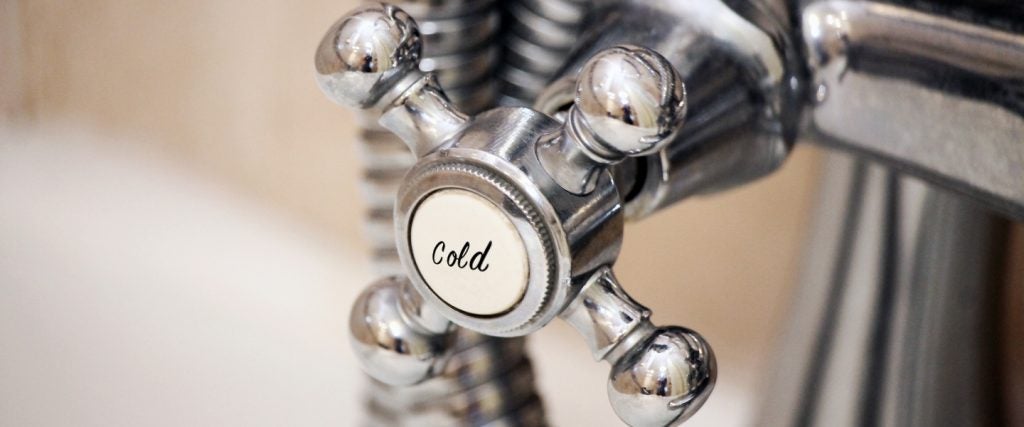When you’re depressed, getting out of bed can be a massive daily struggle — to say nothing of trying to find the will to take a shower, too. But have you tried making that shower… cold?
Unfortunately, I’m here to tell you that an arctic blast of water in the morning might actually help with your depression.
We already know that there are many benefits associated with ice baths, a popular trend among athletes, Wim Hof wellness types and celebrities like Liam Hemsworth. They, along with cryotherapy and cold plunges, promise to do everything from reduce migraines to treat mood disorders to prevent dementia (though some of these claims are more scientifically backed than others). Taking a cold shower essentially works the same way as an ice bath, except it’s a lot easier to jump out screaming because you’re already standing up.
By reducing your body’s temperature, you’re reducing inflammation, which is regarded as one of the most significant predictors of mental and physical illness, including depression and anxiety. Additionally, the shock from the cold water stimulates the vagus nerve, which runs from your brain to your gut. When you’re in a state of distress or fight-or-flight, your sympathetic nervous system is activated and floods your brain with cortisol. The vagus nerve, however, offsets this and allows the parasympathetic nervous system to take over.
“The parasympathetic nervous system controls the body’s ability to relax,” psychotherapist Brent Metcalf explains. In particular, it increases the release of rewarding neurotransmitters like dopamine. Again, that’s why stimulating the vagus nerve when you’re depressed and anxious is so important, and why cold showers are “an excellent grounding technique.”
Unlike ice baths, which can last 10 to 15 minutes, cold showers only need to be about 30 seconds to a minute to achieve results, and you can do the rest of your showering at a normal temperature. That said, some studies suggest a three-minute cold shower with a five-minute adaptation period, at about 68 degrees, once or twice a day, for several months, to achieve optimal results.
There are also plenty of fitness enthusiasts like personal trainer Michael Garrico who have jumped from cold baths to cold showers over the years. Cold showers were never Garrico’s thing, until he found that they could impact his depression. And so, he started adding them to his routine, and despite some initial discomfort and skepticism, they worked. Now he regularly incorporates them into his bedtime ritual, which “helped in calming my depressing thoughts at night,” he tells me. It might not sound like the most relaxing way to wind down, but after a long, stressful day at work, it “helps calm all the negativity in my mind,” he says.
Of course, there are many shades of depression a cold shower cannot fix, so it’s crucial to talk to friends, family or a doctor or therapist, and make sure you’re getting the help you need. But as long as that’s covered, dowsing your sads in icy cold water may be more than worth the extra goosebumps.

